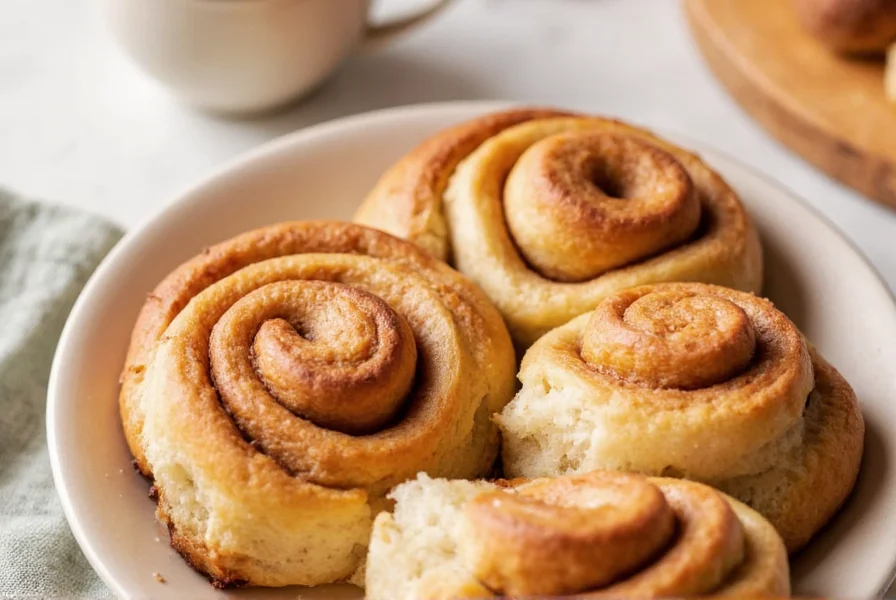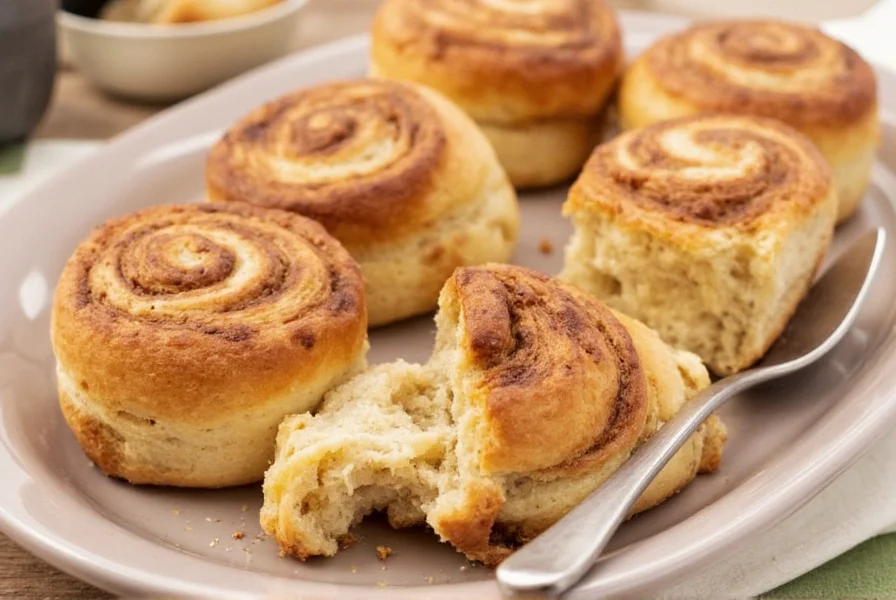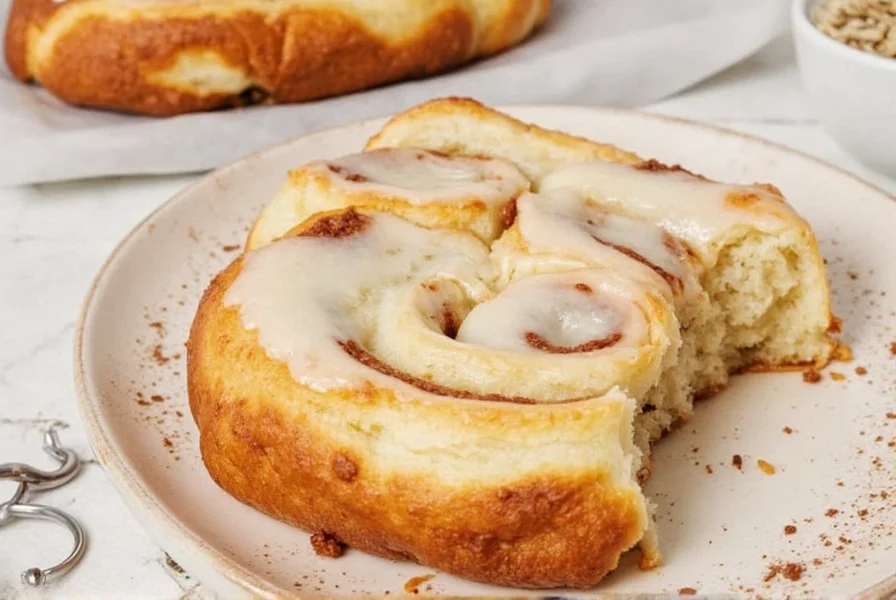Sugar free cinnamon rolls offer a delicious alternative for those seeking to enjoy this classic treat without refined sugar. Whether you're managing blood sugar levels, following a specific dietary protocol, or simply reducing your sugar consumption, these modified pastries can satisfy your cravings while aligning with your health goals.
Understanding Sugar Alternatives for Baking
Creating successful sugar free cinnamon rolls requires understanding how different sugar substitutes behave in baking. Unlike refined sugar, which contributes to texture, browning, and moisture retention, sugar alternatives have unique properties that affect the final product.
Erythritol is one of the most popular choices for sugar free cinnamon rolls recipe development. This sugar alcohol provides about 70% of sugar's sweetness with virtually no calories and doesn't impact blood glucose levels. When combined with monk fruit extract, it creates a sweetness profile closer to traditional sugar without the bitter aftertaste some experience with pure erythritol.
Allulose represents another excellent option for keto cinnamon rolls without sugar. This rare sugar behaves almost identically to regular sugar in baking—it caramelizes, browns, and contributes to texture—but contains only 0.4 calories per gram and doesn't raise blood sugar. The main drawback is its higher cost compared to other alternatives.

Best Sugar Substitutes Compared
| Sweetener | Sweetness (vs sugar) | Calories | Baking Properties | Best For |
|---|---|---|---|---|
| Erythritol | 60-70% | 0.2 cal/g | Doesn't caramelize well, can crystallize | General baking, especially when blended |
| Allulose | 70% | 0.4 cal/g | Caramelizes and browns like sugar | Recipes requiring browning and texture |
| Monk Fruit | 150-200x | 0 | No bulk, often blended with erythritol | Blended sweeteners, small-batch baking |
| Stevia | 200-300x | 0 | No bulk, can have bitter aftertaste | Liquid applications, not ideal for doughs |
Perfecting Your Sugar Free Cinnamon Rolls Recipe
Creating bakery-quality sugar free cinnamon rolls requires adjustments beyond simply swapping sweeteners. The dough chemistry changes significantly when removing traditional sugar, which feeds yeast and contributes to structure.
For optimal results with diabetic friendly cinnamon rolls, consider these professional tips:
- Yeast activation: Sugar typically helps activate yeast, so when making sugar free cinnamon buns, add 1 teaspoon of honey or maple syrup (optional) to the warm liquid just for yeast activation, then remove before incorporating into the dough
- Dough hydration: Sugar alternatives don't retain moisture like sugar, so increase liquid content by 10-15% to prevent dry, crumbly rolls
- Leavening boost: Add 1/4 teaspoon of baking powder to help with rise since sugar-free doughs often rise more slowly
- Sweetener ratio: Use a 50/50 blend of erythritol and allulose for the best balance of sweetness, texture, and browning in low carb cinnamon rolls
Nutritional Comparison: Traditional vs. Sugar-Free
Understanding the nutritional differences helps contextualize why sugar free cinnamon rolls have become increasingly popular. A standard cinnamon roll contains approximately 30-40g of sugar and 300-400 calories, while well-formulated sugar free versions can reduce sugar content to 2-5g and calories to 200-250.
For those following specific dietary protocols, healthy cinnamon roll alternatives can be adapted to various needs:
- Keto version: Use almond flour blend (70% almond flour, 30% coconut flour) with allulose sweetener
- Gluten free sugar free cinnamon rolls: Combine tapioca starch, almond flour, and xanthan gum for structure
- Dairy-free option: Substitute butter with coconut oil and use plant-based cream cheese for frosting

Troubleshooting Common Issues
Even experienced bakers encounter challenges when making cinnamon rolls without refined sugar. Here are solutions to the most frequent problems:
- Dense texture: Sugar-free doughs often become dense because alternative sweeteners don't feed yeast like sugar. Solution: Extend proofing time by 25-30% and ensure your yeast is fresh
- Lack of browning: Erythritol doesn't caramelize like sugar. Solution: Add 1-2 teaspoons of psyllium husk powder to promote browning in sugar free cinnamon rolls
- Crumbly rolls: Sugar alternatives don't retain moisture. Solution: Increase fat content slightly (add 1-2 tablespoons melted butter) and don't overbake
- Bitter aftertaste: Some sweeteners develop bitterness when heated. Solution: Use allulose as primary sweetener or add 1/4 teaspoon vanilla extract to mask aftertaste
Serving and Storage Recommendations
Sugar free cinnamon rolls have slightly different storage properties than traditional versions. Because they lack sugar's preservative qualities, they're best consumed within 24-48 hours for optimal texture.
For longer storage, freeze unbaked rolls after shaping:
- Prepare rolls through the shaping stage
- Place on parchment-lined baking sheet
- Flash freeze for 2 hours
- Transfer to airtight container with parchment between layers
- Store frozen for up to 3 months
- Thaw overnight in refrigerator before baking
When preparing sugar free icing for cinnamon rolls, consider using powdered erythritol blended with cream cheese, butter, and vanilla. For a dairy-free option, coconut cream works surprisingly well when chilled and whipped with your preferred sweetener.
Frequently Asked Questions
Can I use stevia instead of sugar in cinnamon rolls?
Yes, but with limitations. Stevia works best in liquid applications rather than doughs because it lacks bulk. For cinnamon rolls, use a stevia-erythritol blend specifically formulated for baking. Pure liquid stevia can create bitter flavors when baked, so follow conversion charts carefully—typically 1 teaspoon liquid stevia replaces 1 cup sugar.
Why do my sugar free cinnamon rolls collapse after baking?
This typically happens because sugar-free doughs have less structural integrity. Sugar contributes to the dough's ability to maintain structure during baking. To prevent collapse, ensure proper gluten development through adequate kneading, don't overfill with filling, and allow complete cooling before removing from the pan. Adding 1/2 teaspoon xanthan gum to the flour blend can also improve structure.
How can I make sugar free cinnamon rolls rise properly?
Sugar feeds yeast, so sugar-free doughs often rise more slowly. To improve rise: 1) Add 1 teaspoon honey or maple syrup to the liquid just for yeast activation (remove before mixing), 2) Increase proofing temperature to 85-90°F (29-32°C), 3) Extend proofing time by 25-30%, and 4) Ensure your yeast is fresh and not expired. The dough should double in size before baking.
What's the best sugar substitute for cinnamon roll icing?
Powdered erythritol blended with monk fruit creates the best sugar free icing for cinnamon rolls. Look for confectioners-style blends specifically designed for icing, as regular granulated alternatives won't dissolve properly. Add 1/2 teaspoon cream of tartar to prevent crystallization. For optimal texture, let the icing rest for 10 minutes after mixing to allow the sweetener to fully hydrate before applying to rolls.
Can I make gluten-free sugar free cinnamon rolls?
Absolutely. For gluten free sugar free cinnamon rolls, use a blend of 60% almond flour, 30% tapioca starch, and 10% coconut flour. Add 1 teaspoon xanthan gum per cup of flour blend to improve elasticity. You'll need slightly more liquid (about 15% more) because gluten-free flours absorb more moisture. The filling and icing can use the same sugar alternatives as traditional sugar-free versions.











 浙公网安备
33010002000092号
浙公网安备
33010002000092号 浙B2-20120091-4
浙B2-20120091-4